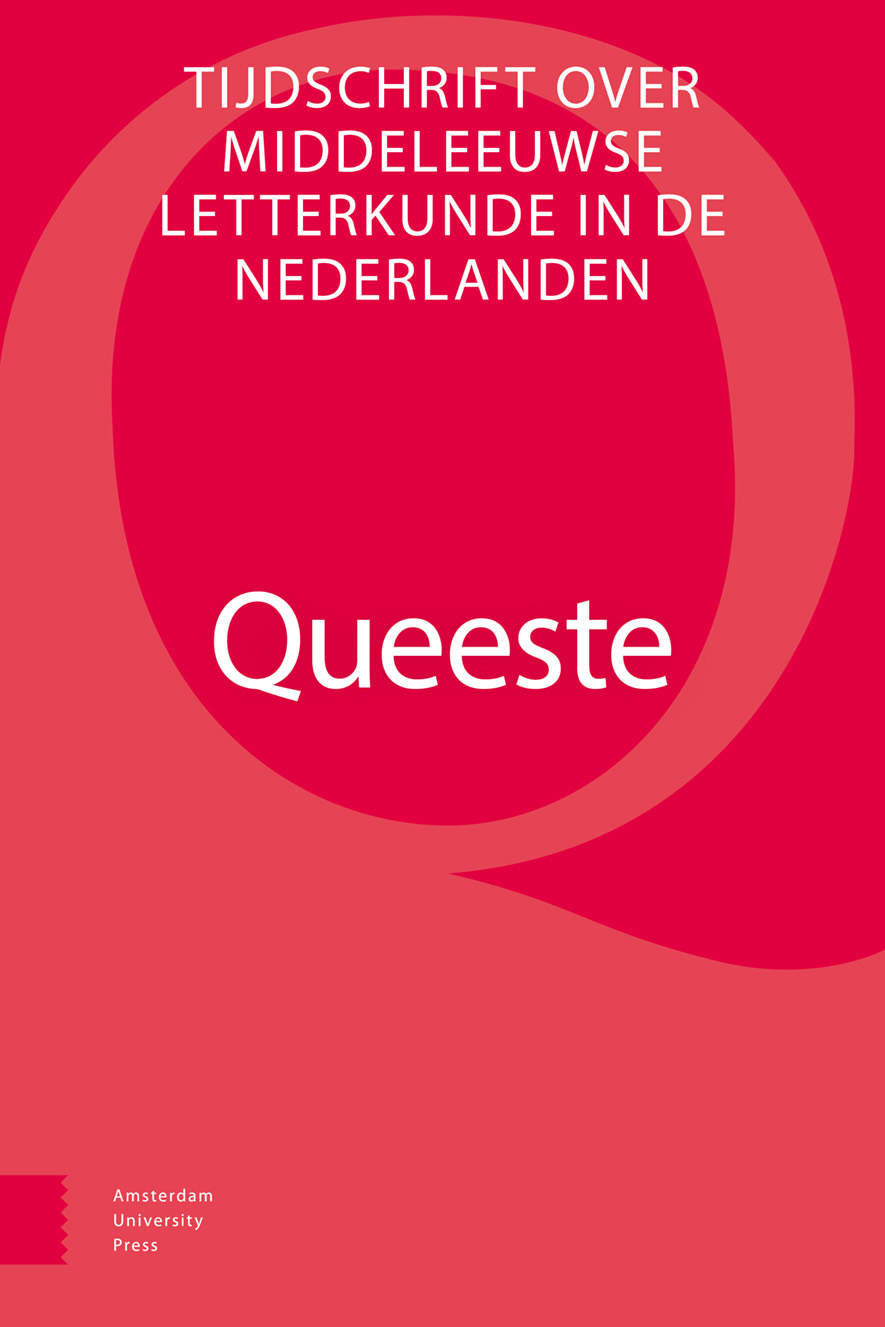-
OAWoest versus wonderbaarlijk
Over het Woud zonder Genade in Die Riddere metter Mouwen en in Velthems Vijfde Partie
- Amsterdam University Press
- Source: Queeste, Volume 28, Issue 2, Jul 2021, p. 161 - 206
-
- 01 Jul 2021
- Previous Article
- Table of Contents
- Next Article
Abstract
Both in Die Riddere metter Mouwen (‘The Knight with the Sleeve’), a Flemish Arthurian romance written in the second part of the thirteenth century, and in Lodewijk van Velthem’s Fifth Part of the Spiegel Historiael (‘Mirror of History’), an early fourteenth-century continuation of Jacob van Maerlant’s voluminous world history (1284-1289), a frightening forest appears which is called Woud(e) sonder Genade (‘Forest without Mercy’). This correspondence is remarkable, for these Middle Dutch texts offer the oldest known occurences of a toponym not found in adjacent languages. Following the reasoning of Marijke Carasso-Kok, Thea Summerfield believes that Velthem has borrowed the name ‘Forest without Mercy’ from the Arthurian romance, which the chronicler may have known at the time: an adaptation of the story is inserted in the Velthem-owned Lancelot Compilation (c. 1320-1330). As Summerfield argues, Velthem presents the English King Edward I as a second King Arthur, not only by stating this explicitly and having Edward enact the role of his predecessor in Round Table festivities, but also, when narrating Edward’s feats, by reminding listeners and readers of Arthurian events from the past as described in romances. One of these romances, according to Summerfield, is Die Riddere metter Mouwen. After drawing his audience’s attention to this romance by using the singular name ‘Forest without Mercy’ again, Velthem in his chronicle – so Summerfield asserts – alludes to frightening incidents in the Arthurian Woud sonder Genade as told in the Flemish story. This narrative strategy, Summerfield concludes, served Velthem’s purpose to prove the historicity of the adventures King Arthur and his Knights of the Round Table once experienced. The current paper aims to prove that Summerfield’s argument is not supported by evidence present in Velthem’s text: apart from the shared toponym, the chronicle contains no intertextual references to Die Riddere metter Mouwen. Therefore, its date of composition (1315-1317) is not valid as terminus ante quem for the creation of the Flemish romance.


